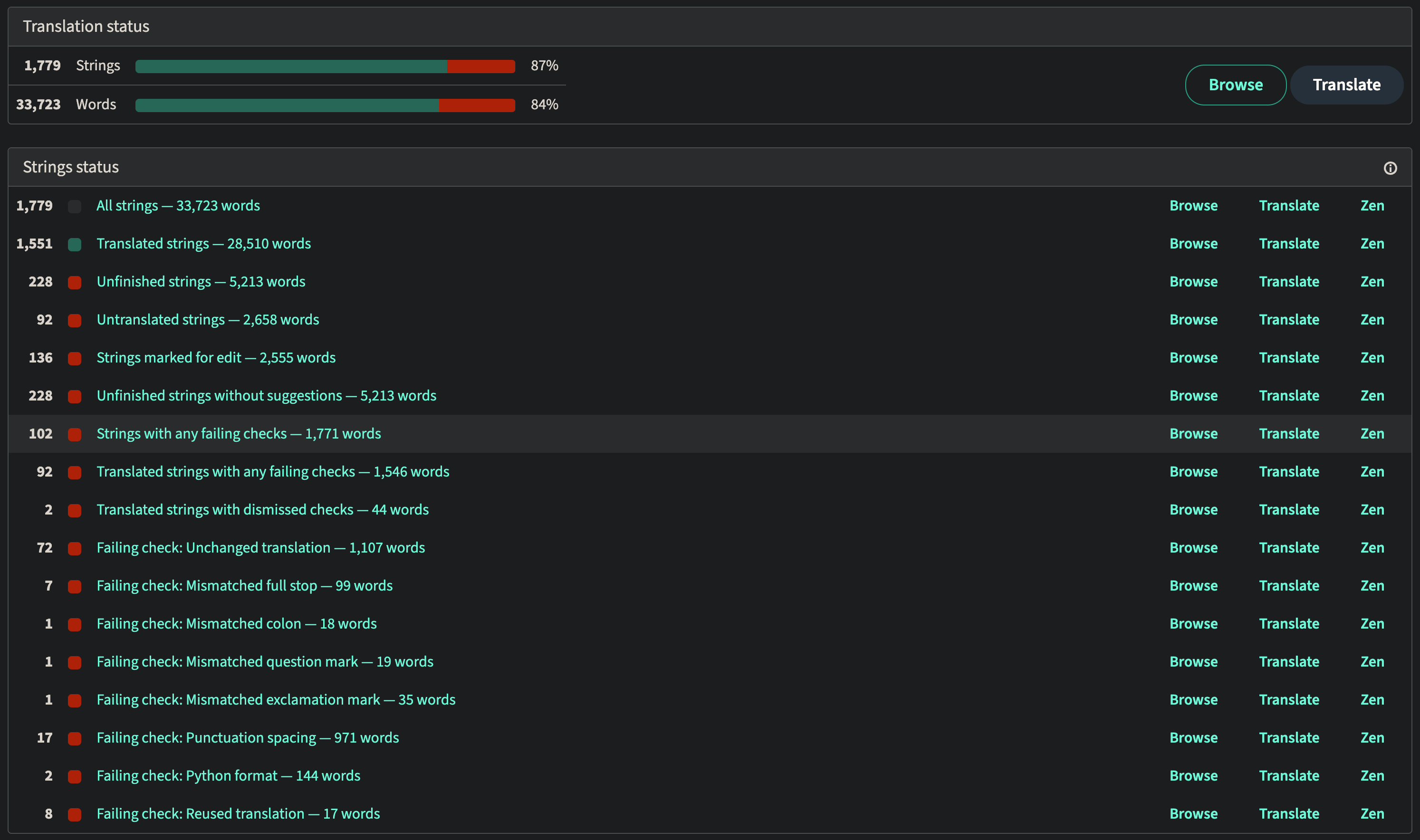Contribute translations#
Since Flower 1.5 we have introduced translations to our doc pages, but, as you might have noticed, the translations are often imperfect. If you speak languages other than English, you might be able to help us in our effort to make Federated Learning accessible to as many people as possible by contributing to those translations! This might also be a great opportunity for those wanting to become open source contributors with little prerequisites.
Our translation project is publicly available over on Weblate, this where most of the work will happen.
Contribute to existing languages#
The first thing you will need to do in order to contribute is to create a free Weblate account on this page. More information about profile settings can be found here.
Once you are signed in to Weblate, you can navigate to the Flower Framework project. Here, you should see the different existing languages that can be found on the website.
Once you have selected the language you want to contribute to, you should see a similar interface to this:
The most straight forward option here is to click on the Translate button
on the top right (in the Translation status section). This will
automatically bring you to the translation interface for untranslated strings.
This is what the interface looks like:
You input your translation in the text box at the top and then, once you are
happy with it, you either press Save and continue (to save the translation
and go to the next untranslated string), Save and stay (to save the
translation and stay on the same page), Suggest (to add your translation to
suggestions for other users to view), or Skip (to go to the next
untranslated string without saving anything).
In order to help with the translations, you can see on the bottom the Nearby
strings, the Comments (from other contributors), the Automatic
suggestions (from machine translation engines), the translations in Other
languages, and the History of translations for this string.
On the right, under the String information section, you can also click the
link under Source string location in order to view the source of the doc
file containing the string.
For more information about translating using Weblate, you can check out this in-depth guide.
Add new languages#
If you want to add a new language, you will first have to contact us, either on Slack, or by opening an issue on our GitHub repo.

